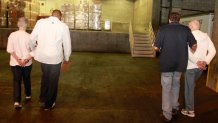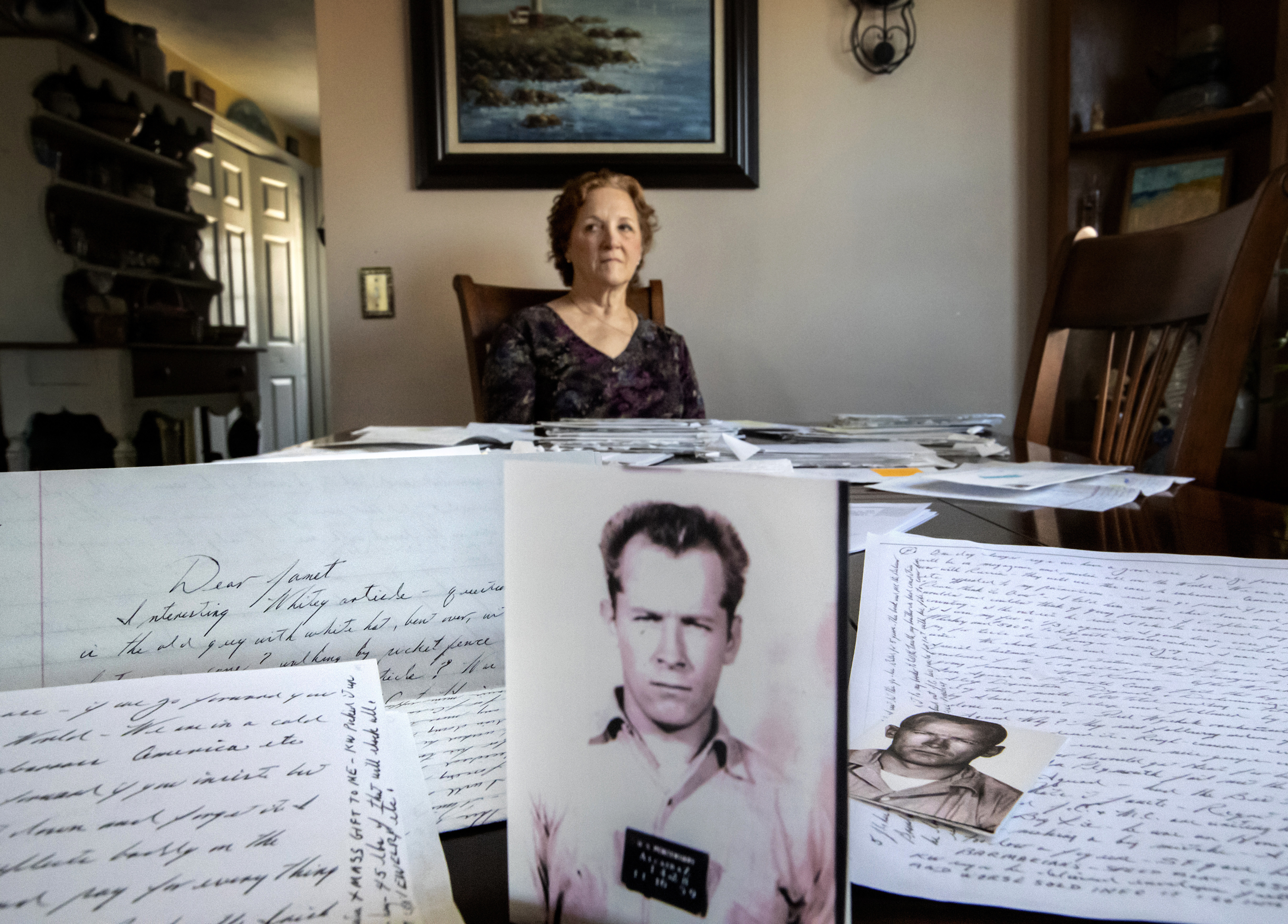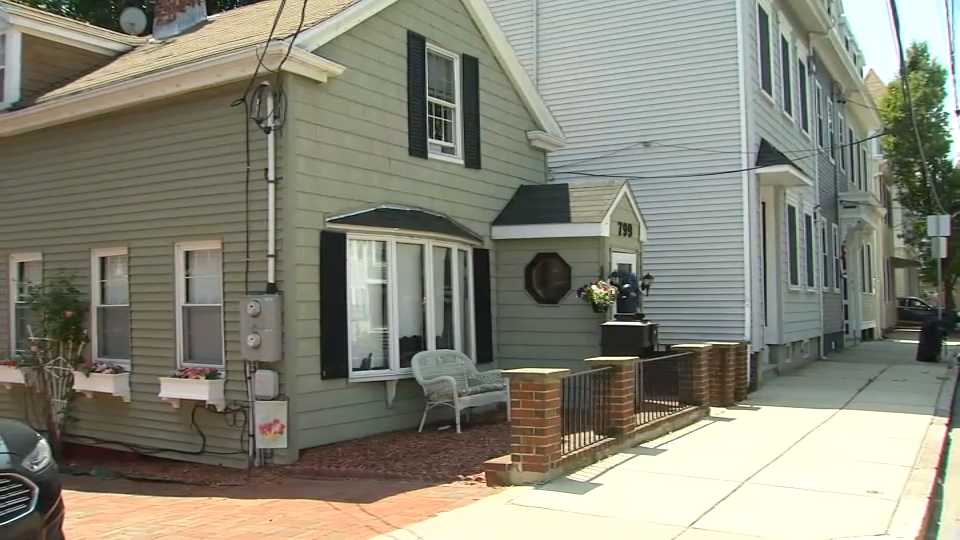We had no plan. We had set up no interviews. But we just knew that we had to see the place for ourselves. Escaping the stingy cold of Boston, where winter refused to submit to early spring, we landed in Los Angeles, grabbed a rental car and drove 11 miles from LAX to Santa Monica.
The weather was sunny and breezy, so we rolled down the car windows to let in the refreshing California air. We couldn’t taste the smog, but traffic along Santa Monica Boulevard was heavy and we seemed to hit every red light.
It gave us time to talk.
“Whitey and Catherine probably took this same stretch of road,” my co-author Dave Wedge said to me.
I nodded from behind the wheel.
“They didn’t have a car, so they probably took a bus or grabbed a cab,” I theorized. “Of course they paid in cash.”
The saga of James “Whitey” Bulger had come full circle for us. I had lived in South Boston in the early 1990s and had witnessed Bulger’s terror up close. My neighborhood in Southie was home to Whitey’s drug dealers and also his partner in crime in the FBI, corrupt agent John Connolly. Later, as a television journalist, I covered Bulger’s disappearance as America’s most wanted mob boss and tracked his years as a fugitive reporting on alleged sightings all over the world.
My partner Dave Wedge did the same as a print reporter and also had the grim task of watching the backhoes unearth the bones of Whitey’s victims and the secrets of his criminal past.
We both had covered crime in New England for decades; from my re-investigation of the Boston Strangler case (my aunt, 19 year-old Mary Sullivan, was the youngest and final victim), to Dave’s reporting on the bizarre Attleboro cult, but Whitey Bulger’s whereabouts continued to mystify and confound us.
Like the fictional character Keyser Soze in the film “The Usual Suspects” – poof, he was gone.
That is, until he was lured into an FBI trap and finally captured on June 22, 2011, while hiding in plain sight.
Photos From ‘Hunting Whitey’
We continued the drive to Santa Monica and eventually found our way to 3rd Street. I parked our rented Nissan and we stepped out across the street from a white, three-story apartment building with the Victorian name – Princess Eugenia. There was no sign out front. It had been taken down long ago to discourage gawkers from taking selfies at the notorious address. We walked up the steps and entered the vestibule, where Dave pressed the button for the building manager.
“I’m Dave Wedge and I’m here with my co-author Casey Sherman,” he said. “We’re writers from Boston and we’re working on a new project about Whitey Bulger. Can you talk?”
“No, I don’t wanna talk,” said the voice on the intercom. “I’m all done talking.”
“Well can you at least let us in the building?” I asked.
There was no reply and the front door remained locked.
Seconds later, a young resident fresh from his morning run entered the vestibule. He asked us if we needed to get inside. We nodded. He then put his key in the door lock, pushed open the door and we followed.
The interior hallway smelled of fresh paint. A small portrait of Queen Elizabeth I hung in the lobby in an attempt to project a regal flair. The queen’s eyes followed us as we began knocking on door after door with no answer. We then stepped into the elevator to the third floor and made our way to apartment 303. I rapped my knuckles on the front door but again – silence.
We continued to gumshoe and spoke with a couple of residents who had heard about the story we were chasing, but weren’t living in the building at the time.
“It’s crazy that it happened here,” one guy holding a toddler said to us.
We returned to the first floor and knocked on the apartment closest to the front entrance. An elderly woman named Catalina Schlank opened her door and welcomed us inside her neatly kept home.
“I was more friendly with her because she was helpful to me,” Schlank said in a think Argentinean accent. “I have lived here for 46 years. They were very good neighbors.”
Schlank then stood up and walked across her living room and pulled out a bag.
“Would you like to see the letters?” she asked before fanning about a dozen or so cards out on her couch.
We examined the first one. It was a holiday card with an illustration of a red covered bridge in a field of snow. We opened it and read the inscription.
Dear Catalina,
May the special gifts of health, peace, joy and happiness be yours throughout the year.
Merry Christmas,
Carol & Charlie Gasko
I handed the card to Catalina and she stared at it.
“You would never believe they were Mafiosi. He had a nice face, a sweet face.”
After spending 20 minutes interviewing the neighbor, we left the building and headed toward our car, when suddenly we were confronted by the building’s maintenance man.
“Don’t worry, we’re leaving,” I said, trying to quell his concerns.
“You’re here to write a story about Bulger, right?” he asked.
“Yup,” Dave replied. “We think we got everything we need. We don’t mean to bother you.”
“Would you like to see where they caught him?” the maintenance man asked excitedly.
We said yes and he led us into the basement car port to the exact oil stained spot where Whitey Bulger’s decades long criminal odyssey had come to an end.
Dave took some photos with his phone as I chatted with the worker.

“We knocked on apartment 303, which was Bulger’s apartment, but got no answer. Does anyone live there?”
The worker explained that the place was being renovated and that it would be available for rent in another month or so.
“Do you have the key?” I asked. “Can you take us inside?”
The maintenance man smiled and showed us to the elevator. Seconds later, we found ourselves back on the third floor and headed toward apartment 303.
Dave and I took deep breaths. To our knowledge, no reporter had ever been inside the apartment where Whitey Bulger and his girlfriend Catherine Greig had lived as America’s most wanted fugitive couple for more than a decade under the names Charles and Carol Gasko.
We stepped into the apartment, which had the rugs ripped up and had just been painted white. There was a fireplace in the center of the living room and a screened balcony off to the side. The kitchen was quite small and led to two bedrooms in the back where the couple had slept separately.
Bulger was long gone, but you could still feel his presence there. We toured the small apartment going from room to room and tried to imagine what it had been like for both Whitey and Catherine while living here. While they must have felt some sense of relief that they were free, unlike Bulger’s closest criminal partner and the crooked FBI agent who covered up many of their crimes, there was also likely a sense of dread that accompanied them each day.
It was the fear of getting caught.
After enjoying this rare look inside Whitey’s lair, we searched for the Santa Monica police department, finding it less than one mile away.
How did Bulger and his girlfriend stay in the shadows and yet in plain sight for so long and what steps did law enforcement take to finally bring them both to justice?
We were determined to find out.



